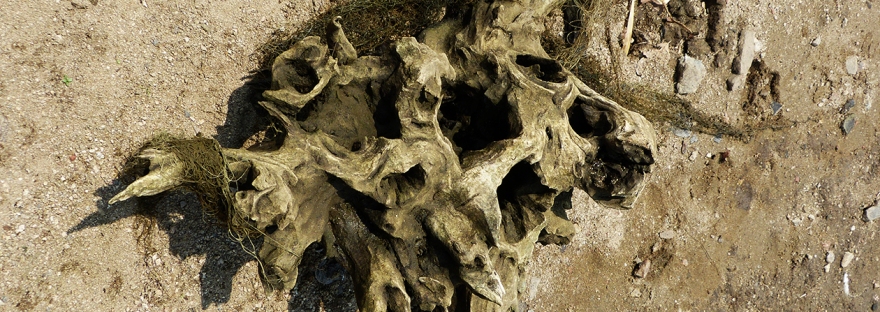What is the nature of art? Is it the product that you see at the end of your process or is it the journey and the process itself. Does the artistic process always have to end in a physical product? These are some of the questions that Roshan Sahi raises and ponders about.
 During his conversation with Art-Ecology, Roshan shares some insights on his artistic journeys, experiences and his ideas on art. Owing to his artist father and educator mother, his childhood was full of rich experiences close to nature that a sensitive young Roshan assimilated. He believes in the idea borrowed from his mother that art is integral to how knowledge is created and perceived. Working on art began from his early schooling days at Sita school run by his mother Jane Sahi at Silvepura, located on the outskirts of Bangalore. After completing the later part of his schooling at Valley School, Kanakapura, Roshan went on to study fine arts at Shatiniketan, West Bengal. The structured educational system present at the art school was not very appealing to him and he preferred spending time at the Santal village than at the College. He returned home to experiment with art based education at Sita school. Eventually he moved to London to do a course in horticultural design and also worked as an horticulture therapist.
During his conversation with Art-Ecology, Roshan shares some insights on his artistic journeys, experiences and his ideas on art. Owing to his artist father and educator mother, his childhood was full of rich experiences close to nature that a sensitive young Roshan assimilated. He believes in the idea borrowed from his mother that art is integral to how knowledge is created and perceived. Working on art began from his early schooling days at Sita school run by his mother Jane Sahi at Silvepura, located on the outskirts of Bangalore. After completing the later part of his schooling at Valley School, Kanakapura, Roshan went on to study fine arts at Shatiniketan, West Bengal. The structured educational system present at the art school was not very appealing to him and he preferred spending time at the Santal village than at the College. He returned home to experiment with art based education at Sita school. Eventually he moved to London to do a course in horticultural design and also worked as an horticulture therapist.
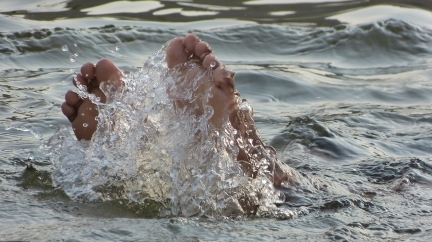 Roshan recollects some of the stories of his childhood – him playing with the mud and water on the lake bed at Hessarghatta and exploring the structures, objects and textures in the soil during school holidays; his parents taking him on a walk along the river bed one day as an eight year old, and so on. He used to also observe his father painting the landscapes at Sangama near Mekedaatu. The idea of landscape as an experience that he later built his art on, stems from this experience. He felt the sense of belongingness to the space.
Roshan recollects some of the stories of his childhood – him playing with the mud and water on the lake bed at Hessarghatta and exploring the structures, objects and textures in the soil during school holidays; his parents taking him on a walk along the river bed one day as an eight year old, and so on. He used to also observe his father painting the landscapes at Sangama near Mekedaatu. The idea of landscape as an experience that he later built his art on, stems from this experience. He felt the sense of belongingness to the space.
Roshan has extensively interacted with students and teachers in various parts of Karnataka, conducted story building workshops and introduced them to different art full experiences.He also dabbles in what he calls, ‘stupid products’ like paintings, pottery and gardening. He insists that art could mean different things to different organisms, it could mean creation, procreation; finding food for one animal and running away from a predator for her prey. The aesthetic quality, positivity and beauty of the experience are not the only ones that depict art.
While talking about one of his artistic projects, he shared the one he started in the year 2012 on the river Arkavathy. While he still continues to think about landscapes, he mentioned that at one point most of his attention was focused towards the idea of water as a resource.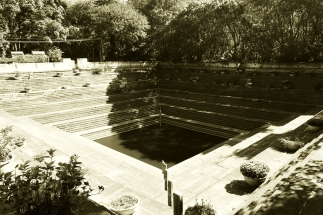 His art in the project sought experiential, ethereal musings. The idea that culture, individuals, societies and clans have awareness of the landscape around them, and perhaps are mindful about it. The thought that such cultural practices could come from relationships of individuals to their surroundings resonated with him.
His art in the project sought experiential, ethereal musings. The idea that culture, individuals, societies and clans have awareness of the landscape around them, and perhaps are mindful about it. The thought that such cultural practices could come from relationships of individuals to their surroundings resonated with him.
He developed his narrative around such stories, and weaved relationships to make a mosaic of the landscape. Building on his ideas of art as an ephemeral experience, he conducted walks as an art activity. This enabled the experience of understanding the textures of the land, the surrounding objects, the navigation through the landscape, engagement of senses beyond the visual, to find the landscape, and find oneself in the landscape.
This experiment was done with students from different schools across Bangalore city, including Drishya, Shrishti school of design and Sita school. In this collective art building process they went to the river body, Arkavati, through the forest as well as urban landscape. The activities were done across space and also across time, lending more weight on the concept of experience than the physical outcome of the process.
As the students walked through and along the river, from the realisation that it takes different forms at different spaces as a line in forest, in the skies as clouds, running underground at some places, becoming a sewer in urban scape they experienced a myriad of emotions ranging from that of happiness, power, destruction, and anger. These experiences were channelised into building narratives that spoke of the river’s mind. These experiences were a reminder of transience of nature, destruction in nature and very own self’s vulnerability in this landscape.
Roshan also muses that art does not always have to be beautiful or a positive experience.The wildness of the river might drown you, or you might erect a resort on river bed.
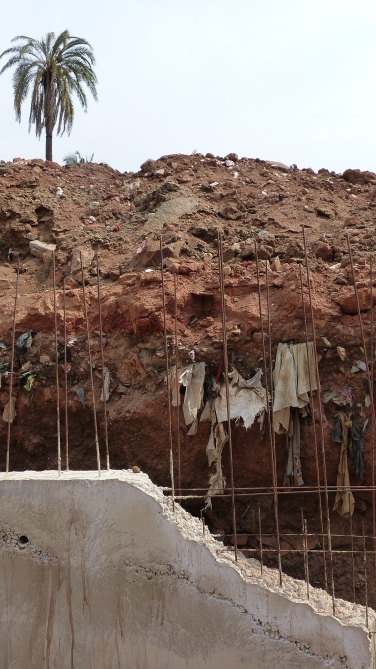
The interaction of human with the river, not only as a resource for water, but beyond that, may be positive or negative. Hence the art and experiences that reflect these emotions would have disgust, disappointment, anger and darkness in them. And this grief and lack of beauty as an art is something that has to be accepted and given due recognition.

He recollected an instance where the students’ collective walked through the eucalyptus trees on the river bed as a protest. While he explored the imaginative worlds amongst the landscape, they also looked at some things with purely scientific objective, including how to understand the depth of water.
During the conversation, Roshan also mentions that right now potable water actually comes from below the rocks, the water, the resource that has been trapped there for thousands of years; the water, that is so old, is being mined, and even mindlessly consumed. He says that the realisations or experiences of drinking something that old, older than a single life span can be an artful experience in itself. He likens drinking that water to consuming fossil fuels.
While talking about the experiences, he mentions how attitudes matter. Attitude changes the way landscape interacts with you and how you interact with the landscape. He believes that one may or may not change their ways or attitudes in the way they react with the environment, but being mindful about it is useful. In the modern life, the risk assessment for presence, survival and a possible future seems to be misplaced, he observes. It has led to magnanimous changes in the way the resources are being handled and landscapes altered.

There is the loss of the habitat and of the landscape that he so intimately feels a sort of kinship to, and he felt that the landscape seemed to be dying around him.. the landscape from his memories.. from his experience.. and the sense of loss hard to bear, is extremely personal. The death of landscape reiterates the transience of nature and also that the nature of experience with surrounding may not always be a positive one.
 Another exploration for Roshan artistic journey has been with earth as a medium for art itself. He likes the idea of slow process. Slowness, he believes, allows one the real space to experience. He spent some time in London to learn ‘slow’ gardening. The gardening experiments have been his therapy since then. He also creates ‘product’ based earth art, namely ceramics. Playing with earth has a story and experience in itself, he claims.
Another exploration for Roshan artistic journey has been with earth as a medium for art itself. He likes the idea of slow process. Slowness, he believes, allows one the real space to experience. He spent some time in London to learn ‘slow’ gardening. The gardening experiments have been his therapy since then. He also creates ‘product’ based earth art, namely ceramics. Playing with earth has a story and experience in itself, he claims.
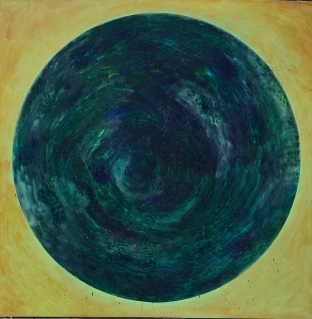
He also mediates about the Sun and circles. A lot of his paintings are about the changes in the Sun with times and seasons and reflections, thereof.
We will leave you with Roshan’s idea that art is awareness and mindfulness about complexity of things. It provides stimulation for the imaginations that is the crucible to mulch and mince various senses and various experiences. Stay imaginative!
